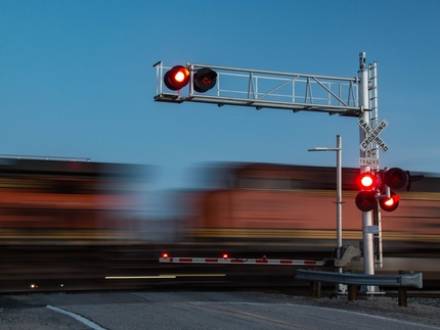Who Is Responsible When a Train Hits a Pedestrian in Illinois?
 Train-pedestrian accidents are often fatal and almost always involve severe injuries. In Illinois, where freight and passenger rail lines cross through cities like Springfield and Peoria, these incidents are tragically not unheard of. When someone is struck by a train, the aftermath raises difficult questions: How did this happen? Who is at fault? What legal options are available to the injured person or their family?
Train-pedestrian accidents are often fatal and almost always involve severe injuries. In Illinois, where freight and passenger rail lines cross through cities like Springfield and Peoria, these incidents are tragically not unheard of. When someone is struck by a train, the aftermath raises difficult questions: How did this happen? Who is at fault? What legal options are available to the injured person or their family?
Determining responsibility for a train-pedestrian accident depends on several factors, including where the accident occurred and whether negligence was involved. If this happened to a loved one, speak with an experienced Peoria, IL personal injury lawyer to understand whether your family has legal options.
Can a Railroad Company Be Held Liable if a Pedestrian is Harmed?
The company that operates the railroad could be held legally responsible if it failed to take reasonable steps to prevent the accident. Illinois law requires railroads to exercise care in operating trains and maintaining crossing areas. The company could be liable if:
-
Warning devices like lights or gates were broken or missing
-
The train operator was speeding or distracted
-
Vegetation or debris obstructed the pedestrian’s view at the crossing
-
The company failed to maintain safe pedestrian access at known crossings
Railroad companies are considered "common carriers," which means they are held to a higher standard of care. If they breached that duty, they could be held accountable under Illinois personal injury or wrongful death law.
Can the City or Property Owner Be Liable for a Train-Pedestrian Accident?
The government entity or property owner responsible for the land near train tracks can sometimes be found liable as well. For example, if the city of Peoria failed to fix a damaged sidewalk near a known pedestrian rail crossing, or if Springfield neglected to install fencing in a high-risk area, they might share fault.
Under 705 ILCS 505/, otherwise known as the Illinois Court of Claims Act, people who wish to make a claim against a public agency have a shorter time frame to file and specific notice requirements to follow. It is important to act quickly if a city’s negligence is involved, and a lawyer can work to ensure that you meet all deadlines and obligations for your claim.
What If a Pedestrian Is at Fault for Their Own Injury in a Train Accident?
Sometimes, a pedestrian’s actions contribute to the collision. If they crossed the tracks illegally or ignored posted warnings, they could share responsibility for what happened. However, Illinois follows a modified comparative negligence rule under 735 ILCS 5/2-1116. This means a victim or their family can still recover damages as long as they are not more than 50 percent at fault. The court will reduce any compensation in proportion to the pedestrian’s share of responsibility, so if they are found 20 percent responsible for their injury, and damages are valued at $500,000, the total damages would be reduced by $100,000 (20 percent of $500,000) and they could recover $400,000.
Damages can cover things like medical bills and rehabilitation costs, lost wages and loss of future earning potential, pain and suffering, and funeral and burial costs in fatal cases. While money can never take away a lifelong injury or make up for the loss of a loved one, it can reduce significant financial stress at a particularly expensive and distressing time. If someone else’s negligence contributed to your family’s suffering, you should not be left to cover the related costs on your own.
Contact a Springfield, Illinois Train Accident Lawyer
If you or a loved one was hurt in a train-pedestrian collision, a Peoria, IL train accident attorney at Kanoski Bresney can help you understand your rights and next steps. We offer free consultations and are ready to begin investigating your case right away. Call us at 888-826-8682 to get started.









